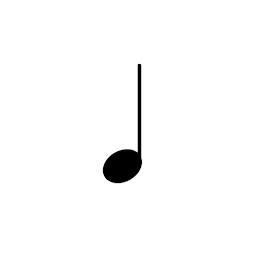Lesson 2 of 6
These resources were made for remote use during the pandemic, not classroom teaching.
Switch to our new teaching resources now - designed by teachers and leading subject experts, and tested in classrooms.
Lesson details
Key learning points
- In this lesson, we will begin to clap rhythmic patterns in a call and response pattern. We are going to learn what improvising means and how to create a rhythmic improvisation pattern. We will also revisit our song and make up some body percussion patterns to fit the pulse.
Licence
This content is made available by Oak National Academy Limited and its partners and licensed under Oak’s terms & conditions (Collection 1), except where otherwise stated.
5 Questions
Q1.1. What is the pulse?
1. What is the pulse?
The length of sound
The pattern of sounds
Q2.2. Which of these symbols represent a 1 beat note? (1 clap)
2. Which of these symbols represent a 1 beat note? (1 clap)


Option 2

Option 3
Q3.3. What is the rhythm?
3. What is the rhythm?
The heartbeat of the music
When we use our bodies to create sound
Q4.4. What is a time signature?
4. What is a time signature?
It tells us how many beats are in the whole piece.
It tells us when to stop playing
Q5.5. What type of song is Step back baby?
5. What type of song is Step back baby?
A song in unison (1 part)
Layering song
Round
5 Questions
Q1.Which of these is a definition of improvise?
Which of these is a definition of improvise?
Long and short sounds
The heartbeat of the music
The pattern of sounds
Q2.Which of these responses did you use in our new song?
Which of these responses did you use in our new song?
Backward step, Backward step
Step down baby, step down
Step forward baby, step forward
Q3.What is the rhythm?
What is the rhythm?
The heartbeat of the music
When we use our bodies to create sound
Q4.What do you need to remember when you 'plug the gap'?
What do you need to remember when you 'plug the gap'?
To copy the previous rhythm
To fit as many notes in as possible
Q5.When improvising what do you need to do?
When improvising what do you need to do?
Do a dance
Write it down first

